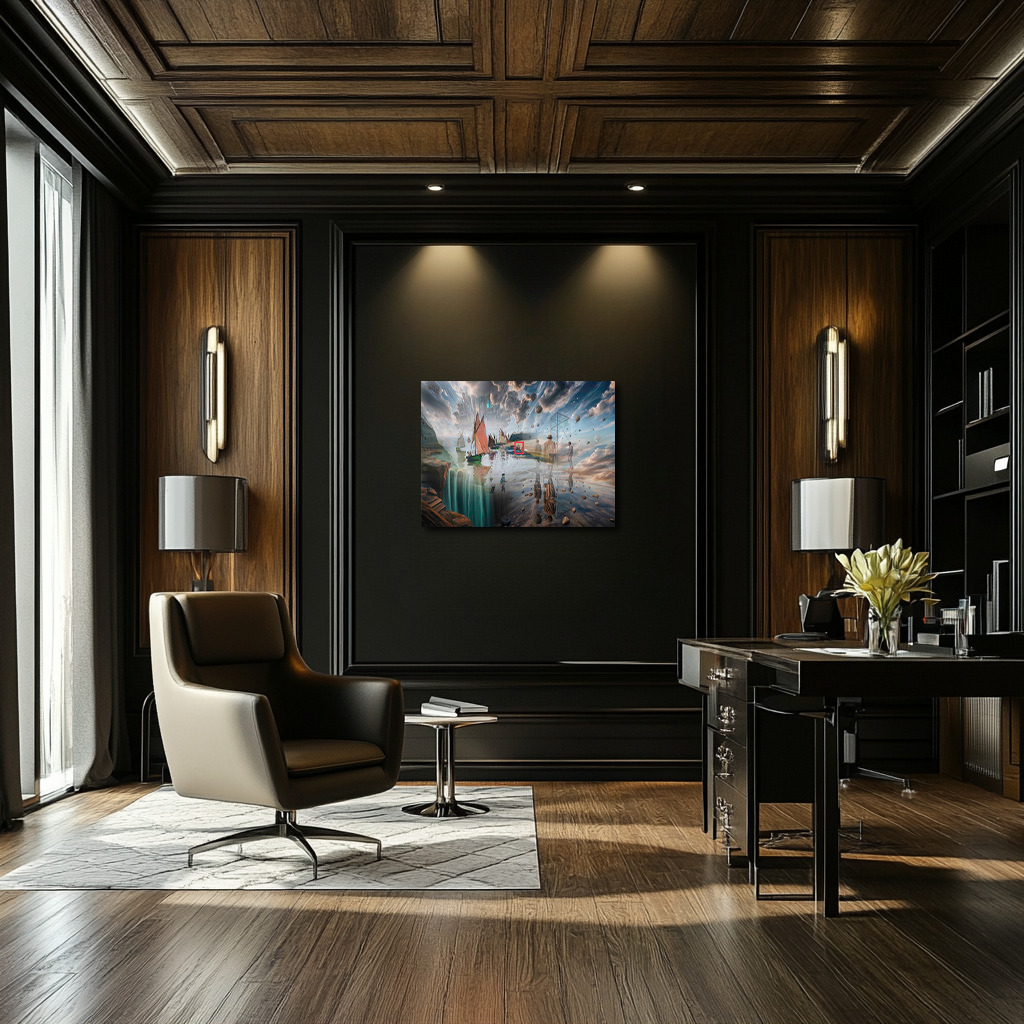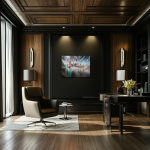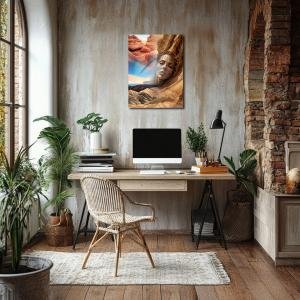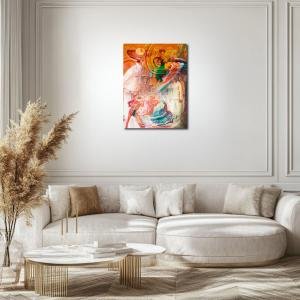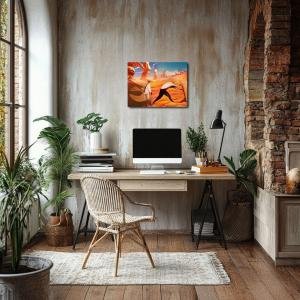The Passage Between Worlds: Trouville's Portal of Reflection
"The Passage Between Worlds" transforms Monet’s Entrance to the Port of Trouville into a surreal meditation on existence and perception. The once peaceful harbor is now a cosmic threshold, where water meets infinity, and reflections become independent entities. Figures stand at the edge of a mirror-like sea, staring at their own alternate selves, contemplating a glowing doorway into the unknown. Boats drift between dimensions, caught in a world where sky and sea merge into something dreamlike yet unsettling. Through a palette of luminous golds and deep, cool blues, this piece explores the balance between reality and illusion, past and future, certainty and the unknowable. It is an invitation to step forward, to embrace the unknown, to ask—where do we truly belong?
Please see Below for Details…
Hotline Order:
Mon - Fri: 07AM - 06PM
404-872-4663
Claude Monet’s Entrance to the Port of Trouville originally depicted a serene harbor scene, where the sails of fishing boats mirrored the sky’s shifting light. In this surreal collage interpretation, the peaceful realism of Monet’s Impressionist work has been shattered and reassembled into a dreamscape—a portal between reality and illusion, past and future, earth and the unknown.
At the heart of the piece, the harbor still exists, but it no longer belongs to the constraints of time. The sea does not simply reflect the sky; it has become a glass-like threshold, leading into an alternate dimension where reflections have lives of their own. A group of figures stand at the water’s edge, observing themselves in the mirror of another world, their gazes fixed upon a glowing doorway of light. Their presence suggests that this is more than just a harbor—it is a passage, an existential gateway to something beyond human comprehension.
The boats that once navigated Monet’s peaceful waters are now caught between two realms. Some appear to sail on, while others drift toward the unknown, their sails dissolving into the shifting sky above. The left side of the composition reveals an unexpected rupture in the world—water tumbles over the edge of existence, cascading into an abyss of infinite depth. Here, nature’s boundaries are no longer predictable; they have been transformed into something cosmic, something mythic.
Above, the sky is alive with surreal elements—floating hot air balloons, reflections that seem to stand on air, and an inverted cityscape looming above the clouds. The sky itself bends with a gravity of its own, as if space and time have folded upon themselves. This merging of the natural and the otherworldly evokes a sense of wonder but also unease, a feeling that the familiar has been twisted into something beyond human grasp.
The color palette plays a crucial role in the transformation of Monet’s world. Soft pastel blues and whites recall the tranquility of the original painting, but here, they are juxtaposed with deep, unnatural shadows and luminous golden tones. The golden light emanating from the portal signifies revelation, a glimpse into the unknown, while the stormy sky and dark water suggest the uncertainty of crossing that threshold. The coolness of the reflected figures contrasts with the warmth of the real-world subjects, emphasizing their dual existence—are they observing their future selves, or ghosts of the past?
As an artist, my intent in this reinterpretation was to explore Monet’s concept of fleeting moments and extend it into an exploration of multiple realities. Impressionism was about capturing the ephemeral, the movement of light and time. But what if time itself was fragmented, if Monet’s fleeting brushstrokes painted not just a moment in history, but a moment existing in multiple dimensions?
The presence of the human figures adds an emotional weight to the piece. They are not just bystanders; they are travelers, seekers, perhaps lost souls navigating an unseen force. Their body language suggests contemplation, hesitation—do they step forward into the unknown, or remain tethered to what is safe and familiar? This moment of decision reflects a universal human experience: the fear and wonder of transformation, the hesitation at the edge of discovery.
In The Passage Between Worlds , Monet’s harbor is no longer just a harbor. It is a metaphor for transition, for the journeys we take both physically and philosophically. It asks the viewer to consider their own passage—where do we stand in the vastness of existence? Are we simply reflections of ourselves, or are we constantly stepping into new versions of reality?
Add your review
Your email address will not be published. Required fields are marked *
Please login to write review!
Looks like there are no reviews yet.

